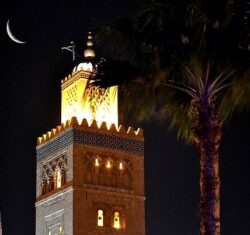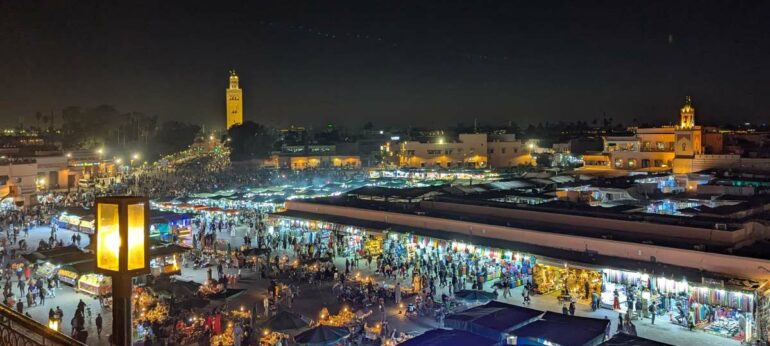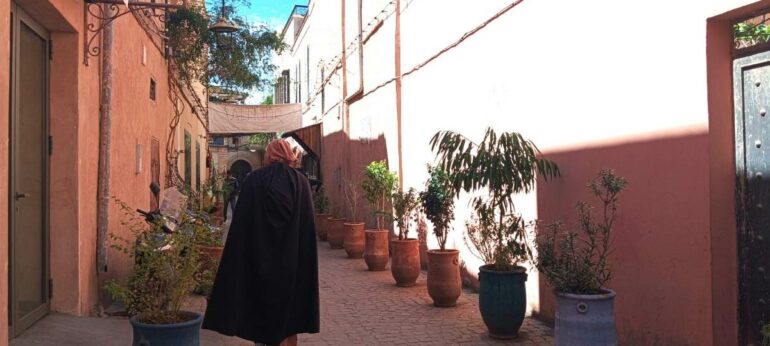It is visible at a long distance from anywhere. Koutoubia Mosque is the true symbol of Marrakech! It seems to watch over the Jemaa El Fna Square, to show the way to the Medina when you are in the modern city of Gueliz, and affirm itself as the reference point when you get lost in the maze of streets of the Medina. Even from the window of the plane, the Koutoubia indicates the ochre city.
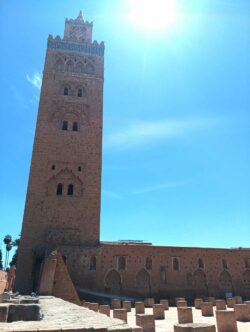
It is a masterpiece of the religious architecture of the Almohad dynasty, as well as the Giralda in Seville which is largely inspired by the Koutoubia. Its minaret, 77 meters high, up to the tip of the arrow, dominates the city. The Koutoubia combines grace and austerity in its appearance. Its beauty is imposed without ostentation.
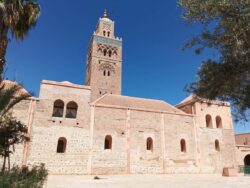
It is still today at the crossroads, marking Jemaa El Fna Square, a genuine meeting place and passage place. Three sides of its minaret look towards Medina districts, the fourth side looks north towards the modern city of Gueliz.
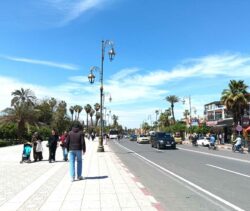
Mohamed V Avenue towards Gueliz
The current building would date from 1158. A first mosque at the same place had been destroyed because its Qibla ( showing orientation towards Mecca) was misdirected. The Almohad sovereigns Abdelmoumen and Yacoub Al Mansour were the builders. His plan is in T.
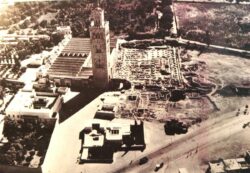
Picture 1920
The mosque has sixteen naves and seven aisles. The prayer hall can accommodate more than 20,000 worshippers.

The minaret (identical to that of the Giralda in Seville) was built a little later. It is decorated with interlaced bows, white and turquoise faience bands composed of squares and hexagons, floral painted ornaments. The four sides are different.
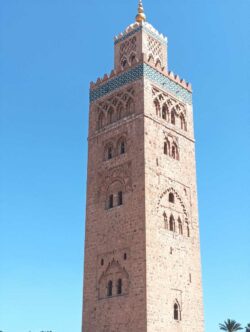
Koutoubia minaret north and west sides
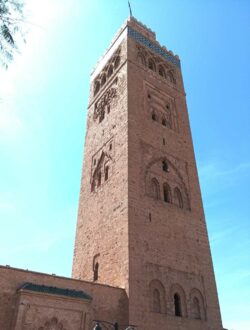
Koutoubia minaret south and east sides
The lantern of 16 meters high and the spire of 7.50 m surmount the first part of the minaret. Four spheres (three visible) and a kind of pointed pear at the top are threaded on the spire.
Of course, the non-Muslim traveller cannot visit the interior of the mosque. This rule, still in force, dates from the French Protectorate. Marshal Lyautey decided this order because he could feel that foreigners did not sufficiently respect these holy places.
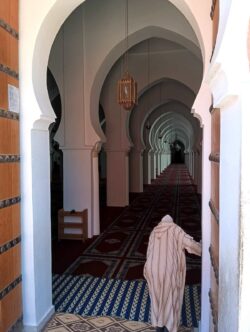
The adjoining gardens and the remains of the first mosque are nevertheless a beautiful walk, allowing to admire the external decorations carved in the stone of Gueliz.
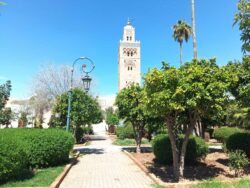
On the north side, the mihrab of the first mosque is visible. This niche in the wall of any mosque indicates the qibla, that is to say the direction of Mecca. This one, misdirected, would have caused the destruction of this first mosque.
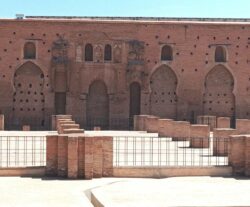
The mihrab of the first mosque
The name Koutoubia refers to books, booksellers. In modern Moroccan language (darija), the word “kteb” means “to write”, “ktaab” the “book”, “kouttab” for “writers”. We can see references to writing, sacred writings, men who transcribe, memory, culture, transmission. Thus, beyond the purely spiritual link, the Koutoubia Mosque is part of an even more universal movement. It is a place in harmony with the three worlds (which sometimes the spheres of the lantern also symbolize ), the celestial world, the intermediate world and the earthly world.
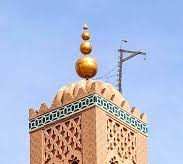
Around the Mosque I give a panoramic look. It can stop on the palm leaves, on the snowy peaks of the Atlas, on the earthy ramparts, on bouquets of roses, on stone ruins which evoke past centuries, on the azure blue of the cloudless sky, on streets and avenues crowded with pedestrians, motorcycles, cars… And some nights when the perfect and stunning crescent moon appears …
